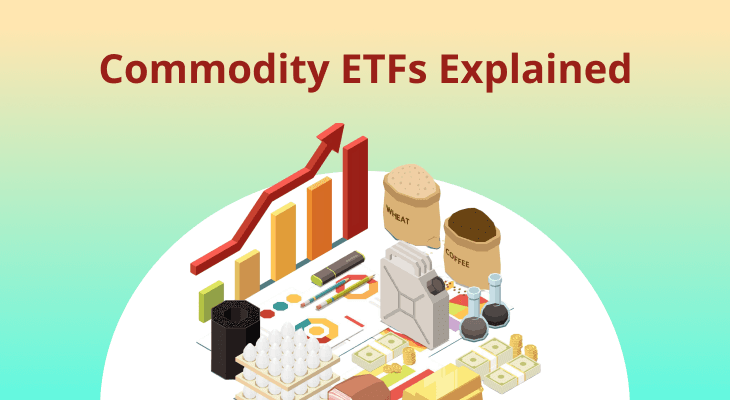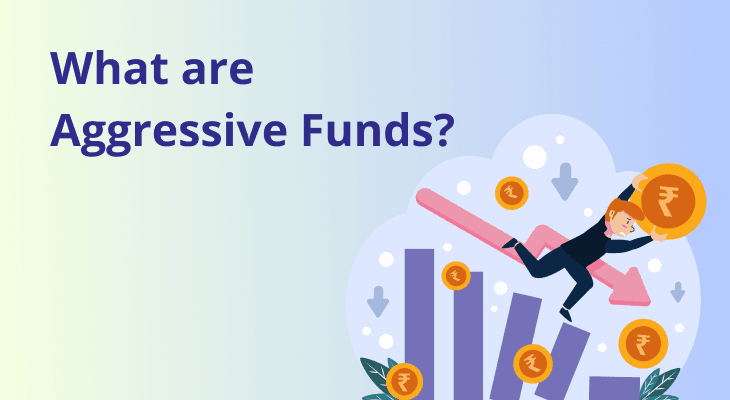
What are Close-Ended Mutual Funds?
Mutual funds in India can be categorised into different groups based on the assets they invest in, how they are managed and even the investment horizon of the schemes. Furthermore, they can also be classified according to their structure — into open-ended or close-ended funds. While open-ended funds are quite common, you may not be familiar with what close-ended funds are.
In this article, we’ll take a closer look at the meaning of close-ended mutual funds, how they work, and what their features and benefits are.
What are Close-Ended Mutual Funds?
Close-ended mutual funds are mutual fund schemes that have a fixed maturity period before which the units cannot be redeemed by investors. This means that the number of units in a close-ended fund remains fixed throughout the investment tenure.
If you want to buy units of close-ended mutual funds directly from the asset management company, you can only do so during the new fund offer (NFO) period. However, you can buy units of these funds if they are traded on the exchange. Similarly, you cannot redeem your holdings with the mutual fund house until the maturity date. That said, these funds can be bought and sold on the stock exchanges if they are listed.
The units of close-ended mutual funds may be trading on the exchanges at a premium or a discount from the net asset value (NAV). You can use the price fluctuations of the units to your advantage and try to buy low and sell high.
Features of Close-Ended Mutual Funds
You now know the meaning of close-ended mutual funds and how they work. Let’s take a closer look at the key features of these funds, so you can better understand them.
Defined Tenure
Close-ended mutual funds have a fixed maturity period. Once launched, these funds are available for subscription only for a limited period.
No Continuous Subscription
Unlike open-ended funds, you cannot buy units of close-ended funds on a continuous basis. After the initial offer period, no further subscriptions can be made.
Trade On Stock Exchanges
After the initial offering, these funds are listed on stock exchanges. You can buy or sell the fund units through the exchange, similar to trading shares.
NAV Disclosures
The Net Asset Value (NAV) of close-ended funds is disclosed just like open-ended funds , typically on a daily basis, even though buying/selling based on NAV might not be possible post the initial offer period.
Lock-In Period
These funds usually have a lock-in period during which you cannot redeem your units directly with the fund house. You need to sell them in the secondary financial market if you wish to redeem your holdings.
Targeted Investments
As the fund has a defined maturity, the fund manager can adopt a more long-term, targeted investment strategy without worrying about sudden large redemptions.
Limited Liquidity
Unlike open-ended funds which assure liquidity on any given business day, the liquidity of close-ended funds depends on the trading volume in the stock market.
Benefits of Close-Ended Mutual Funds
Now that you know what close-ended mutual funds are and what their key features include, you may be interested in learning about their unique benefits. Check out the top advantages of close-ended funds below.
Long-Term Commitment
The fixed tenure of close-ended mutual funds ensures that the fund manager can plan for longer-term investments without the risk of sudden withdrawals.
Potential For Better Returns
With a clear investment horizon, the fund manager can potentially ride out market volatility and focus on long-term growth opportunities.
Avoids Panic Redemptions
In volatile market conditions, open-ended funds might face a lot of redemptions, forcing fund managers to sell at inopportune times. This issue is reduced in close-ended funds.
Discounted Purchases
Sometimes, close-ended funds might trade at a discount to their NAV in the secondary market, offering an opportunity for investors to buy units at a price lower than their actual value.
Diversification
Like other mutual funds , close-ended funds also provide the benefit of diversification and spread the investment risk across different asset classes.
Professional Management
Investors get the benefit of professional fund management, where seasoned managers handle the portfolio of close-ended mutual funds.
Structured Strategy
Close-ended mutual funds are characterised by a structured investment strategy that ensures the fund stays true to its objectives without getting sidetracked by short-term market sentiments.
Clear Exit Strategy
Since the fund has a predetermined maturity, you get more clarity about when the fund will wind up and when you can tap into your returns.
Close-Ended vs. Open-Ended Mutual Funds
To make an informed decision about whether or not close-ended mutual funds are right for your portfolio, you need to understand how they are different from open-ended funds. The table below encapsulates this.
Particulars | Close-ended Mutual Funds | Open-ended Mutual Funds |
|---|---|---|
| Definition | Mutual funds with a fixed number of units and come with a specific maturity period | Mutual funds that continuously issue and redeem their units based on demand |
| Liquidity | Traded on stock exchanges, but units cannot be redeemed till the maturity date | Easily bought and sold at the Net Asset Value (NAV) of the fund directly |
| Purchase and Redemption Price | Price is determined by the market, which may be above (at a premium) or below (at a discount) the NAV | Price is based on the fund's end-of-day NAV |
| Initial Offer | Available for purchase only during the initial new fund offer period | Can be purchased anytime after launch too |
| Duration | Fixed maturity period | No fixed maturity |
| Fund Size | Fixed size, which does not change unless there's a further issue of shares or a buyback | Size can change daily based on the number of shares bought or redeemed |
| Management Style | Managers have a relatively stable pool of assets to oversee, allowing for potentially longer-term investment strategies | Managers might need to maintain a more liquid portfolio due to the possibility of frequent redemptions |
| Dividends | May pay out dividends, but the capital cannot be withdrawn until maturity (unless sold on the secondary market) | Can offer dividends or capital gains, and investors can redeem the units at any time |
Should You Invest in Close-Ended Mutual Funds?
Close-ended mutual funds may not be the best option for every investor. You should only consider investing in them if they align with your financial goals and risk profile. More specifically, these mutual may be suitable for you if:
You're looking for a long-term investment and are comfortable with the fund's fixed maturity date
You're prepared for potential fluctuations in the fund's market price, which may differ from its net asset value
You believe in the fund manager's expertise and strategy, given that they have a relatively stable pool of assets to manage without frequent redemptions
You don't expect that you would need immediate liquidity from this investment, as the units can't be redeemed directly with the fund
You seek a diversified investment vehicle that, once closed, won't be influenced by daily investor buying or selling actions
Conclusion
With this, we come to the end of this article. You should now have a clear idea of what close-ended mutual funds are, how they work and whether or not they may be suitable for your investment portfolio. If you deem them suitable, ensure that you are aware of the risks involved and assess if they align with your risk profile before you invest in these funds.
SIPs let you invest small amounts regularly, making it easier to stay consistent with your goals. With time, your money grows faster through compounding, helping you get the most out of your investments. Try our SIP Calculator to see how your money can grow and make smarter plans for your future.


